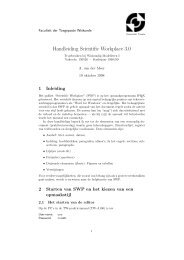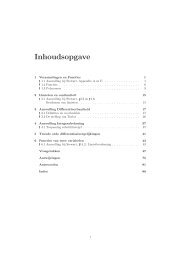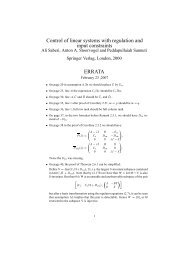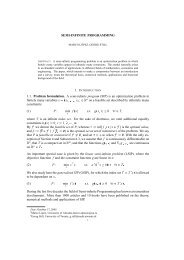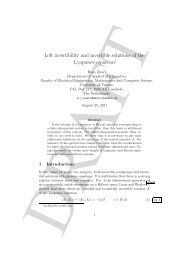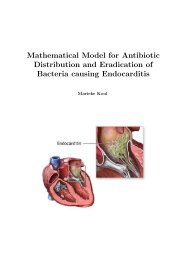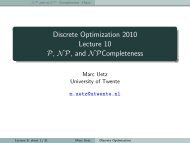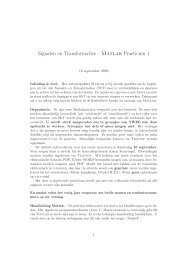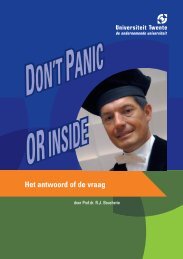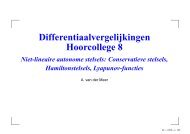Lecture Notes Discrete Optimization - Applied Mathematics
Lecture Notes Discrete Optimization - Applied Mathematics
Lecture Notes Discrete Optimization - Applied Mathematics
Create successful ePaper yourself
Turn your PDF publications into a flip-book with our unique Google optimized e-Paper software.
Using this and the definition of h, we obtain<br />
0= ∑<br />
(u,v)∈E + g(u,v)− ∑<br />
(u,v)∈E − g(v,u)− ∑<br />
= ∑<br />
(u,v)∈E f<br />
g(u,v)− ∑<br />
(v,u)∈E f<br />
g(v,u)− ∑<br />
= 2(<br />
∑<br />
(u,v)∈E f<br />
g(u,v)− ∑<br />
(v,u)∈E f<br />
g(v,u)<br />
(v,u)∈E + g(v,u)+ ∑<br />
g(v,u)+ ∑<br />
(v,u)∈E f<br />
)<br />
.<br />
(v,u)∈E − g(u,v)<br />
(u,v)∈E f<br />
g(u,v)<br />
Here the second equality follows from the observations above: for every (u,v)∈E + we<br />
have (u,v) ∈ E f , for every (u,v) ∈ E − we have (v,u)∈E f , and g(u,v) is non-zero only<br />
on the edges in E + and E − . We conclude that g is a circulation of G f .<br />
The proof now follows from Lemma 6.3. (Note that there are at most m edges with<br />
positive flow in g. Thus, g can be decomposed into at most m cycles flows.)<br />
6.3 Cycle Canceling Algorithm<br />
Lemma 6.2 shows that if we are able to find a cycle C in G f of negative cost c(C) < 0,<br />
then we can augment r f (C) units of flow along this cycle and obtain a flow f ′ of cost<br />
strictly smaller than c( f). This observation gives rise to our first optimality condition:<br />
Theorem 6.1 (Negative cycle optimality condition). A feasible flow f of G is a minimum<br />
cost flow if and only if G f does not contain a negative cost cycle.<br />
Proof. Suppose f is a minimum cost flow and G f contains a negative cost cycle C. By<br />
Lemma 6.2, we can augment r f (C) units of flow along C and obtain a feasible flow f ′<br />
with<br />
c( f ′ )=c( f)+r f (C)·c(C)



